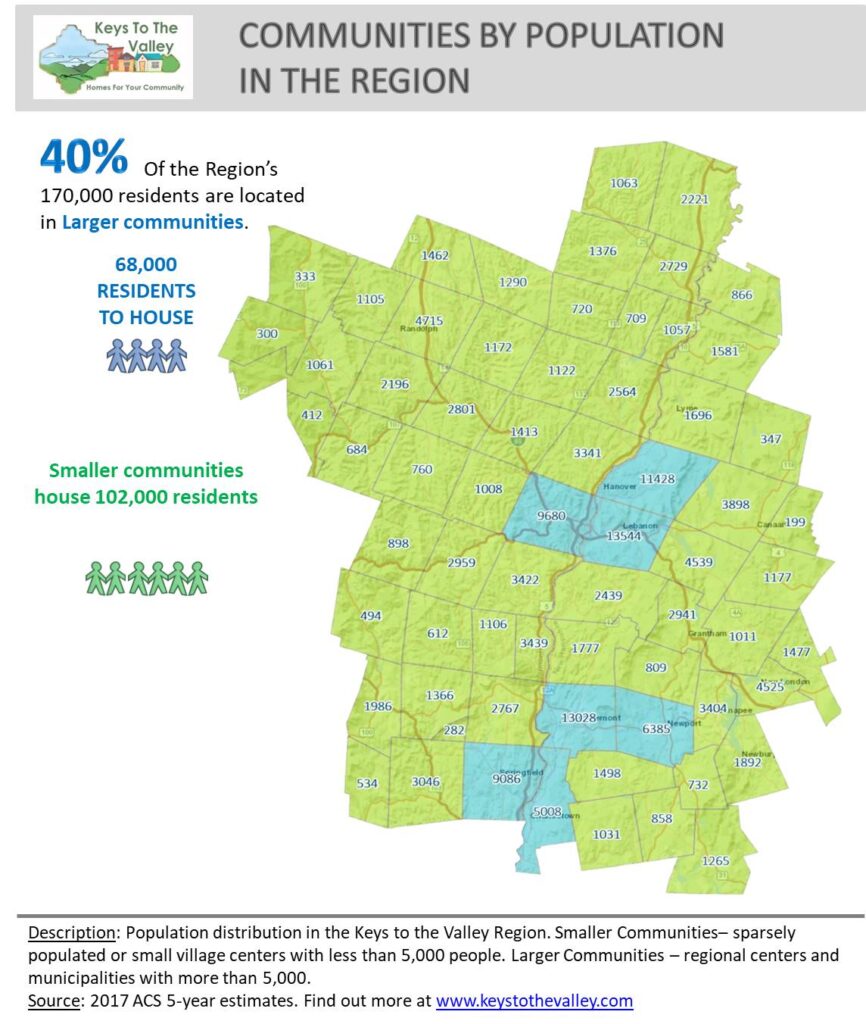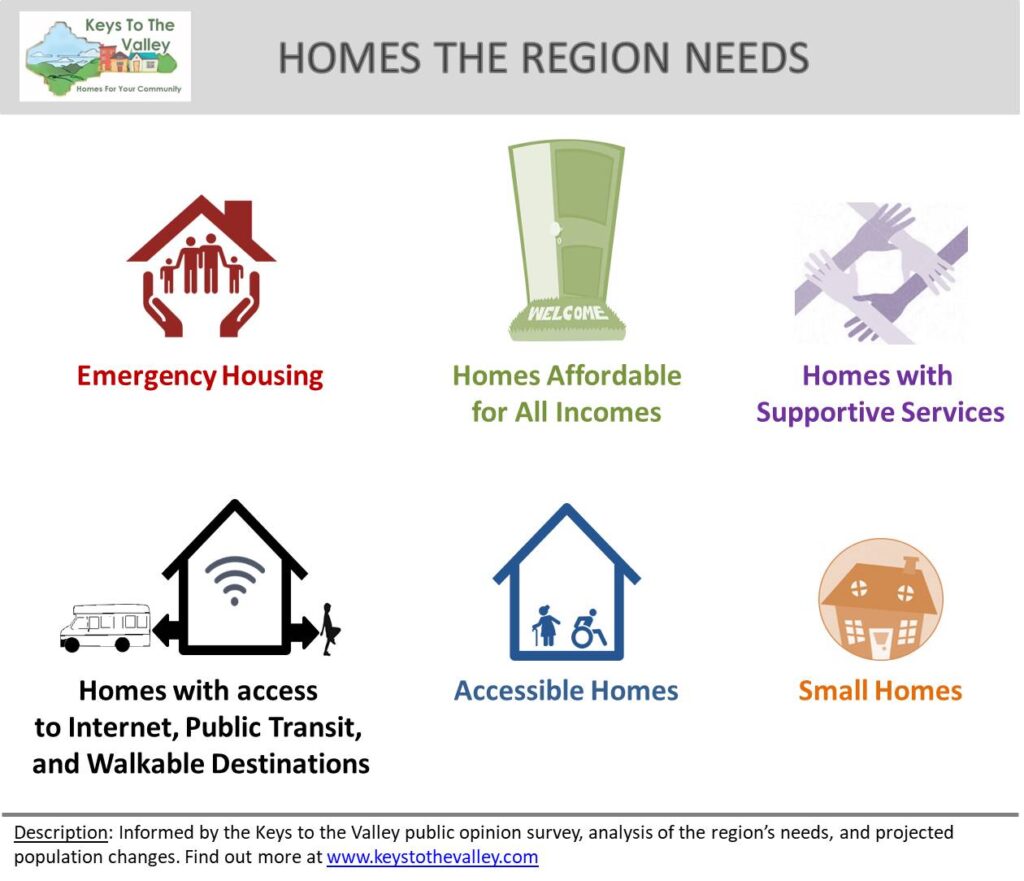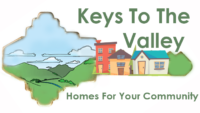
The greater Upper Valley region (region), has many diverse communities, including resort towns, rural lands, and employment and population centers. Just seven larger communities (population 5,000+) are home to 40% of our residents, but most people live in the remaining smaller 60 towns (population <5,000) (Figure 1). Several of the smaller communities have downtowns or substantial village centers. We have taken this range of size into consideration as we have crafted solutions to our housing crisis, and even the smallest can take some steps.
Our population is getting older, with age cohorts of people aged 65 and over increasing and younger age cohorts declining. While not expected to grow much in total by 2030 (based on pre-pandemic trends), we still will add thousands of households due to decreasing household size. For more detail, see the synopsis of Population and Households (including projected growth) and for even more data go here.
Our housing stock is charming but old, and this brings with it issues of poor energy performance, lead paint, substandard wiring, and lack of accessible features. Making the needed changes to older homes is expensive, but home rehabilitation is one necessary answer to our housing needs. Click for more information on Older Homes.
Our homes are priced out of reach for too many of our residents. This situation mirrors national trends. A third of our current total households are paying more than is healthy for their home, and for renters the situation is even more dire with 45% being cost burdened. To find out more go to Costs of Homes.

Through our research in data and stories, Keys to the Valley has identified six major types of homes the region needs– emergency housing; homes affordable for all incomes; homes with supportive services; homes with access to internet, public transit and walkable destinations; accessible homes; and smaller homes (Figure 2).
Keys to the Valley attributes the persistence of the region’s housing challenges to a mix of barriers. Many of these barriers have worsened during the COVID-19 pandemic. There is no consensus on which barriers have the biggest impact, although some do stand out, as highlighted by our public opinion survey. Further, it is agreed that action is needed on multiple barriers to tackle the problem. The most prominent barriers include:
- High cost of land
- High cost of construction, both in labor and materials
- Limited number of housing developers and building trades workforce
- Lack of financing for construction and renovation
- Homes available are not affordable to many household incomes
- In-migration of higher household incomes
- Local regulatory barriers and community opposition
- State regulatory barriers
Given the scale and persistence of these housing challenges in our communities and the region, it is apparent that the housing market will not address these challenges on its own. Local, regional, and statewide governments and non-profit partners have a significant and vital role to play in enabling and delivering improved and affordable home options for residents.
Where our homes are, compared to where we work and shop and use services, has important implications. Our rapidly growing elderly population, including those 85 and older, need to be able to access services if they cannot drive. We need to shrink our energy usage, a large part of which is transportation. And our communities need to better accommodate people walking and biking for our own health. Click this link to find out more about how our homes relate to Transportation.
Our region must stay informed, in communication, and adaptable as we work to better understand and address the serious challenges we face. The region should continue to monitor the condition, affordability, and availability of homes in the region, as well as the housing market; in particular, due to the impacts of the COVID-19 pandemic and possible future climate migration.

